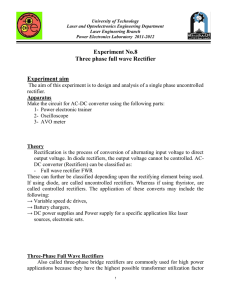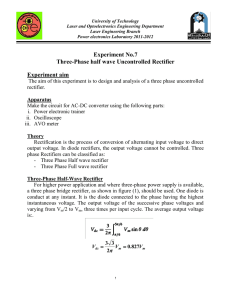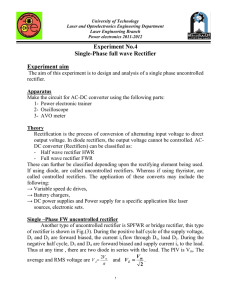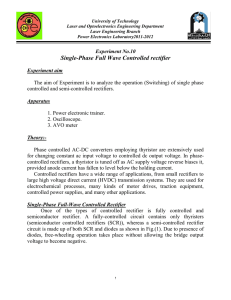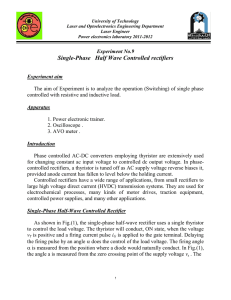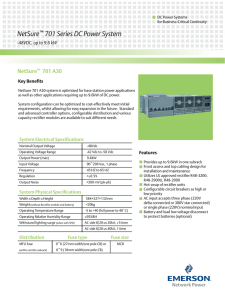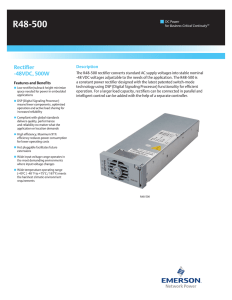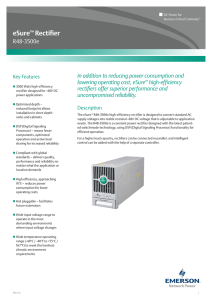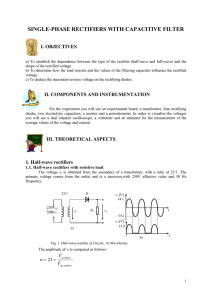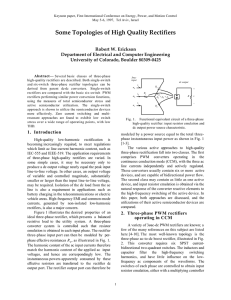Three-Phase Full wave Controlled Converters (Controlled rectifier)
advertisement
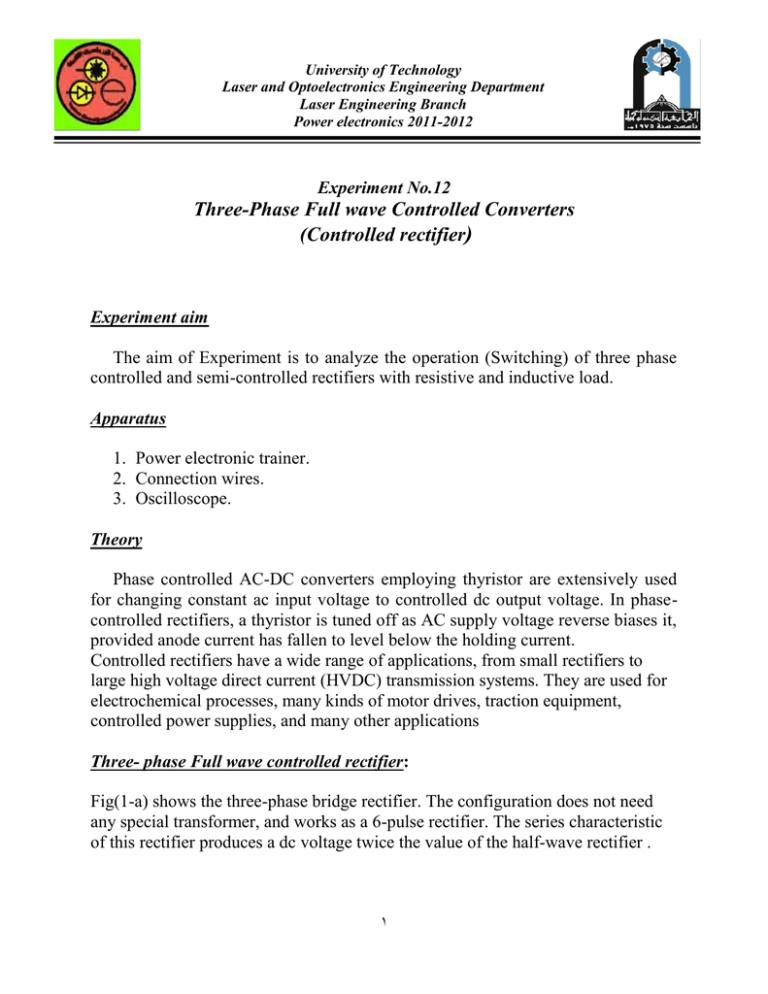
University of Technology Laser and Optoelectronics Engineering Department Laser Engineering Branch Power electronics 2011-2012 Experiment No.12 Three-Phase Full wave Controlled Converters (Controlled rectifier) Experiment aim The aim of Experiment is to analyze the operation (Switching) of three phase controlled and semi-controlled rectifiers with resistive and inductive load. Apparatus 1. Power electronic trainer. 2. Connection wires. 3. Oscilloscope. Theory Phase controlled AC-DC converters employing thyristor are extensively used for changing constant ac input voltage to controlled dc output voltage. In phasecontrolled rectifiers, a thyristor is tuned off as AC supply voltage reverse biases it, provided anode current has fallen to level below the holding current. Controlled rectifiers have a wide range of applications, from small rectifiers to large high voltage direct current (HVDC) transmission systems. They are used for electrochemical processes, many kinds of motor drives, traction equipment, controlled power supplies, and many other applications Three- phase Full wave controlled rectifier: Fig(1-a) shows the three-phase bridge rectifier. The configuration does not need any special transformer, and works as a 6-pulse rectifier. The series characteristic of this rectifier produces a dc voltage twice the value of the half-wave rectifier . 1 University of Technology Laser and Optoelectronics Engineering Department Laser Engineering Branch Power electronics 2011-2012 Fig(3-a): Three-phase full-wave rectifier Fig(3-b): Three-phase sime control rectifier 2 University of Technology Laser and Optoelectronics Engineering Department Laser Engineering Branch Power electronics 2011-2012 The load average voltage is given by: neg Fig(2) shows the voltages of each half-wave bridge of this topology pos D and D , the total instantaneous dc voltage vD, and the anode-to-cathode voltage vAK in one of the bridge thyristors. The maximum value of vAK is 3 Vmax, which is the same as that of the half-wave converter . Fig(2) 3 University of Technology Laser and Optoelectronics Engineering Department Laser Engineering Branch Power electronics 2011-2012 Procedure 1. Connect the three-phase full wave controlled rectifier circuit shown in Fig.(1-a) on the power electronic trainer. 2. Turn on the power 3. By use oscilloscope, plot the input and output waveforms on the same graph paper" same axis". 4. Measure the average and RMS output voltage by connect the AVO meter across load resistance. 5. Turn off the power 6. Use an inductive load. With L=100mH measure the output voltage and plot the output waveform. 7. Repeat step 6 with L=100mH measure the output voltage and plot the output waveforms. 8. Repeat step 6 & 7 with connect the freewheeling diode across the load. 9. Connect the three-phase bridge half-control rectifier circuit shown in Fig.(1b). 10. Repeat steps (2-7). Discussion and calculations 1. Compare between the practical and theoretical results for input and output voltages and currents. 2. Design a high voltage power supply for CO2 laser, when the optical output power is 12 watt. The current and voltage electronically highly stabilized DC power unit has a nominal output 70mA and 6kV. Pumping under optimal conditions (maximum laser output), a current of 20mA at 4 kV is observed. 3. Compare between the three-phase half-wave controlled rectifier and threephase full-wave controlled rectifier 4
